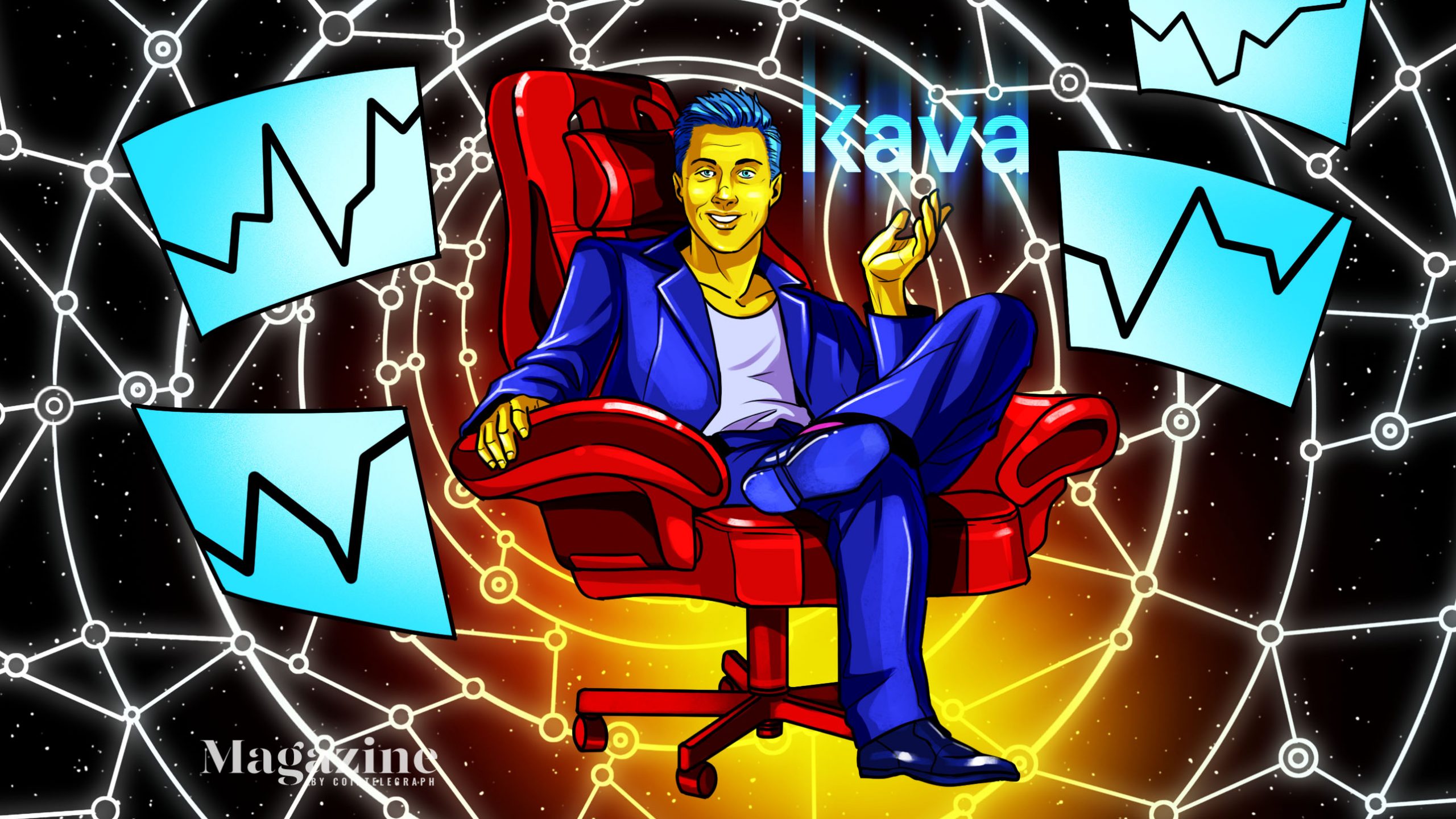
Making DeFi idiot-proof with Kava’s gamer CEO, Brian Kerr – Cointelegraph Magazine
- summy Morphe
- May 17, 2021
- Litecoin
- 0 Comments

According to Kava Labs CEO Brian Kerr, the major reason that decentralized finance, or DeFi, has not yet hit the mainstream is that “93% of holders are never gonna touch their own keys.”Kava is a non-Ethereum-based DeFi platform that enables users to earn interest on the cryptocurrencies they hold. The investors Kerr hopes to reach are those who used an on-ramp like Coinbase or Binance to buy cryptocurrencies that are now sitting on the exchange. They are “worried about ‘fat-fingering’ and losing their funds in a transfer, or something like that,” he says. Being used to keeping their money in a bank account, these investors prefer to keep their cryptocurrencies on a crypto platform rather than in a hardware wallet.Kava’s platform connects lenders with borrowers directly, but the real challenge is “not just creating the protocol on the platform but making integrations on it directly accessible in the venues where people currently live,” he says, referring to exchanges and payment processors.In the future, he envisions that major players like PayPal and Fidelity, which are both rolling out cryptocurrency solutions, may want to integrate with the Kava API in order to “extend interest-earning products” directly to their users.“A core belief that we have is that you have to meet users in the venues that they’re at. I think of them like distribution hubs, but really they are retail-focusing apps that have relationships with their customers.”Kava has already integrated with a number of platforms — including Binance, Huobi and Bitmex — “Not for listing our tokens but actually the savings products, and the lending products of Kava are directly available on those platforms.” Kerr envisions many more will plug Kava services into their platforms. “Basically, any app where crypto is held, we can expand the custody of Bitcoin or XRP or Ethereum or whatever it might be with financial services to put that capital to work.”The vision is to allow a user holding a currency like Bitcoin to simply click on the interest-earning product they want and use a slider to adjust the amount of BTC they wish to earn interest on. The user experience is simple, Kerr says, as they won’t even see the Kava user interface or website. “It’s all handled on the back end.”“I think that’s really the direction that things are going, is that people don’t need to know that DeFi is there.”A refuge in gamingKerr, now 32, describes a rough childhood of being raised by his grandmother in an ethnically diverse and working-class neighborhood where “all the neighbors were doing various forms of drugs, more the hard stuff like meth and heroin. It was very different from your middle-income white suburbia of America that most people think of,” he recalls, adding that for as long as he can recall, he felt out of place as one of the only white people in his school.It was also a scary environment. “Every day at noon there would be huge fights and police would come in with riot shields,” he reminisces of his underfunded high school that resembled a prison — full of gangs and often unable to provide teaching. With that in the background, he gravitated toward a group of students “who liked playing video games.” That’s how he got into gaming, which would go on to define much of his career.The competitive environment of university, where he first started in software engineering, was an unexpected challenge because in high school, “I was able to coast through that without any real guidance or good habits.” He dropped out.He soon started taking classes again and eventually was accepted to San Francisco State University in 2007, where he settled on business because he saw it as a generalist degree for an uncertain future. “I ended up switching my major about eight times through that process,” he recalls.Upon graduating in 2011, he was hired by Sierra Circuits, a circuit board manufacturer, where he was “a sales engineer working with tech guys at Boeing and Raytheon on their prototypes for things that would go up into space.” Though he gained confidence in working with technology, he soon dreamed of leaving the family-run company for entrepreneurship where he could be his own boss.“All the executives and anyone that got promoted was like within the family, and everyone else was treated almost like a second-class citizen. That was my first education on how companies should not be run. I also realized that I need to do my own thing.”Leaving the company, Kerr arrived at a fork in the road. On one side was a well-paying job with chip manufacturer Nvidia. “It was sort of a fast track to a CMO [chief marketing officer], definitely a great opportunity for where I was in my life and experience level,” he says, adding that the work would have focused on the company’s important gaming product lines.The other option was to move to London where he would work for Fnatic, a three-person esports-gear startup, “to entertain my entrepreneurial desires, taking this enthusiast esports team and turning it into something real.” The idea was to “build a Beats by Dre, but for gaming gear,” with celebrity gamers and influencers helping design things like keyboards, headsets and mice.“I had these two opportunities. One was a very reliable corporate job that was gonna teach me a lot about how a big company works — that was going to be really good for my career. Whereas on the other side, it was a pretty questionable opportunity.”He asked various friends working senior-level jobs at different businesses what they would do, and they all considered Nvidia to be the obvious choice. “Zero people said to take the role at Fnatic trying to build hardware. ‘That’s preposterous,’ they said.” He decided not to take the advice and moved to London. The work also took him to Gothenburg in Sweden before bringing him back to the San Francisco Bay Area in 2015.At Fnatic, Kerr helped build the team up from three to over 100 people and learned to run an international business with manufacturing in Asia and partnerships with gamers around the world. Business was booming due to esports entering the mainstream through things like Twitch, a streaming platform marketed toward gamers. Early on, having an esports team was just a hobby between friends and family who might collect the occasional sponsorship — and then, “All of a sudden, these teams are worth hundreds of millions of dollars and the lines of business are huge and there’s media rights involved and everything else.”Blockchain callsIt was in San Fransisco that Kerr met Alexander Kokhanovskyy, a Russian esports founder who was launching DMarket, a decentralized market for in-game items. The ownership of digital assets like character skins or gold for multiplayer games such as World of Warcraft seemed natural and intuitive to Kerr, so he joined the project as an adviser.“It blew my mind that these guys were able to raise $20 million in about three weeks on effectively a PowerPoint because it was really hard to do that for a legitimate business like mine, with millions of dollars of real revenue.”Witnessing DMarket’s success in gathering investment capital served as Kerr’s wake-up call to blockchain, causing him to look more deeply into the growing industry.“I was fortunate enough to be able to ping my network and get in front of people like Joseph Lubin and executives at Ripple and others, all within the span of four weeks after deciding to jump into crypto as my next thing, and that’s been the story ever since,” he recounts.“I just knew I was going to dedicate at least the next five to 10 years of my life into this industry because there was so much disruptive technology that was going to be in play. It was just gonna be the best opportunity, for me and then also to give impact to the world.”Non-Ethereum DeFiKerr says that his Kava co-founders came from the poker world and gained respect for the idea of censorship-resistant money b
ecause online poker sites would often get shut down by regulators due to gambling laws. When this happened, all the money held by the companies would be seized, meaning that “my co-founders’ money was just locked up for years, and they had no access to it. They weren’t able to earn interest on it. It was just stuck in limbo.” As a result, much of the online gambling industry switched to cryptocurrency.Kerr expresses wonder at the various ways that cryptocurrency has drawn people in. Whether through poker, gaming, or by encountering it via work or study, there are many paths to blockchain. “I just happened to lean really heavily on the gaming side.”Kava Labs actually began with a very different mission, he explains. “We founded Kava Labs actually thinking that cross-border payments using digital currencies was actually going to be the biggest game-changing thing. The volumes of trade in foreign exchange are some of the largest in the world, so the TAM [total addressable market] seemed to be so large that you could make an impact there.” The firm’s original goal led the team to work with Ripple to speed up transactions. Some of the solutions it worked on included implementing “noncustodial wallets into Lightning Network with Ethereum payment channels, and Dai payment channels using Dai stablecoins,” he says.Between 2017 and 2019, the crypto-payments industry “was not going into the billions — it was still in the $100 millions,” Kerr said, explaining that the business was not scalable at that volume. With the team being $500,000 in the red with its own money by June 2019, a change of course was needed.“We did an audit of all of our skills at that time, and we had built up this big wealth of knowledge of all the different blockchains — how they work, what would be the requirements to make them interact with each other.”They decided to build Kava as a platform for accessing DeFi services without needing to rely on Ethereum. The first step was to write a blog post, after which the project attracted a “total of $8 million over the course of a few weeks.”In October 2019, Binance Launchpad hosted a KAVA token sale and airdrop, a lucky strike that Kerr says resulted in a wide distribution of tokens, which is generally seen as evidence of investor confidence. “It’s been kind of going to gangbusters ever since we launched the Kava blockchain,” which happened the following month.Despite the hype, the initial minimum viable product took until June 2020. That product was a platform offering collateralized loans first for Binance’s native Binance Coin before expanding to Bitcoin, XRP and others.Kava has grown substantially since launch, with Kerr explaining that the platform now boasts about $300 million in deposits and $80 million in outstanding loans between an approximate quarter-million accounts.“I expected it to grow more, but it is the largest in-production non-Ethereum DeFi platform and application that exists today. I’m very proud of that fact, and I think it’s only sort of up from here as we add more assets and add more financial services on top of it.”Despite his apparent success, it hasn’t been an easy road. “I’ve always had a little bit of imposter syndrome,” he says, referring to the feeling that one’s achievements or position have not been earned. The fact that the industry is rife with scams and hacks no doubt adds to the pressure, and many Bitcoin-maximalist and no-coiner types are known to deride the DeFi industry as little more than a Ponzi scheme. The high rates of return can also paradoxically turn away users who view DeFi’s opportunities as too good to be true.Kerr has high hopes for Kava’s newest feature, a “hard-protocol money market” which was initially set to be released on March 31 to allow users to earn interest on Bitcoin. “It will be very high early on is all I can really say, but it’s going to be likely in the 20%-plus APY range to start,” he says with confidence. However, he does not expect such high returns to last, due to increasing competition between DeFi platforms as borrowers seek the lowest interest rates.“I think all the DeFi services are going to be commoditized over time. Everything can be squeezed in terms of prices as people chase yield.”


